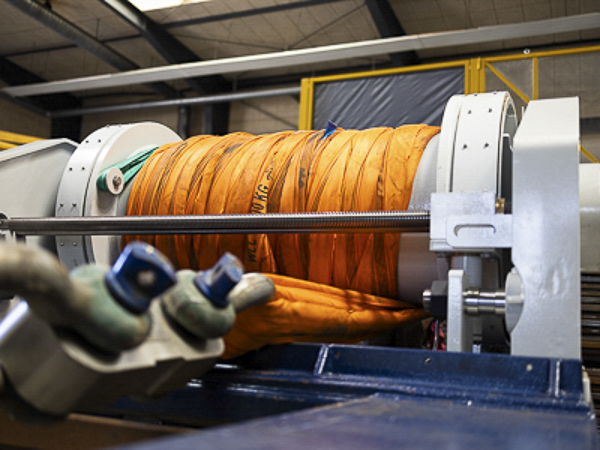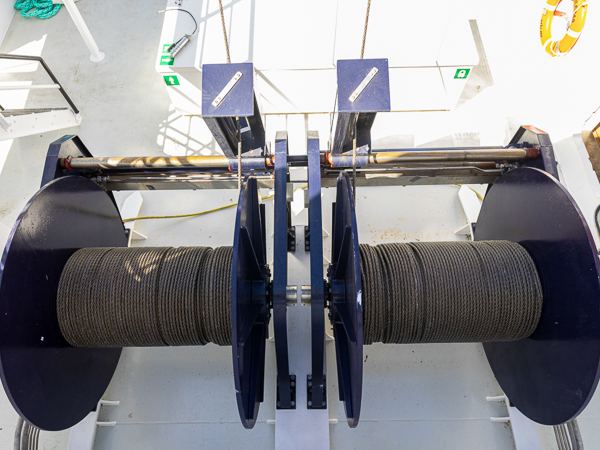Key factors to consider before buying a split winch
At AS SCAN, our winches are designed to meet the precise needs and requirements of our customers. Therefore, it's crucial to consider a range of technical aspects to ensure you get the best possible solution. Here are some important factors to keep in mind when purchasing a split winch:
Requirements for Speed and Pulling Power
When choosing a split winch, it's essential to consider the specific requirements for pulling speed and force. The pulling power depends on both the motor size and gearing. Finding the right balance between power and speed is key, as high pulling power can often reduce speed. Conversely, if speed is a top priority, you may need to compromise on pulling power to achieve the desired speed. To ensure an optimal solution, both pulling speed and force should be tailored to your specific tasks and load requirements.

A split winch showcasing a pull test in AS SCAN factory.
Motor and gear type
One of the first things to consider is the type of motor - should you opt for a hydraulic or electric winch? The right choice depends on the nature of your tasks and the conditions under which the winch will be used. The motor size must also match the necessary pulling force and capacity for your project. The gear system is another crucial component, as it greatly impacts the winch's pulling power and speed. Therefore, it’s important to assess your requirements for motor and gear type.

Close-up of the hydraulic motor and gear system design for optimal winch operation.
Winch Capacity
-
Drum Diameter: The outer diameter of the side plates plays a vital role in both the dimensions and capacity of the winch. A larger drum diameter can accommodate more rope or wire but also affects the pulling power. The closer the rope or wire is to the core, the greater the pulling power. Conversely, on the outer layers, the pulling power decreases due to the increased distance from the core. Therefore, it's important to consider the drum size in relation to the required pulling force, especially when working with the outer layers of rope or wire.
-
Core Diameter: The diameter of the innermost tube is another important specification. A larger core diameter might be necessary for handling thicker ropes or wires and can improve the overall capacity of the winch. The dimensions should also align with the internal traversing to ensure optimal functionality.
-
Internal Traversing: The internal traversing refers to the distance between the inner sides of the side plates. This measurement is crucial as it determines the maximum width of the rope or wire that can be wound onto the winch.
Use a Drum Capacity Calculator
To get a clearer understanding of how much rope or wire can be wound onto a drum of a given size, you can use a capacity calculator. This drum capacity calculator provides an estimate based on the specifications you input, such as internal traversing, core diameter, drum diameter, and wire thickness.

Double-drum split winch setup highlighting internal traversing in marine use.
Summary
Choosing the right split winch requires careful consideration of factors such as motor, gear, drum, and core diameter, as well as internal traversing. By taking these aspects into account, you can ensure that the winch fits your tasks perfectly. At AS SCAN, we are ready to help tailor a solution that matches your precise needs.
If you're considering which type of rope or wire to use for your winch, we have a guide summarizing the differences between steel wire and Dyneema/Spectra.

